Caring for violets at home: how to ensure abundant flowering?
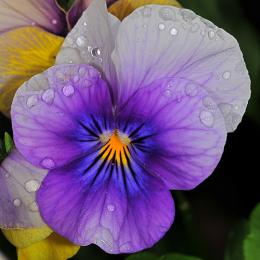
Saintpaulia has long conquered the hearts of gardeners. Each of the 1,500 species is unique in its own way. Traditionally, the flower is considered to be quite capricious in terms of its conditions. With proper care, bright flowers will delight the eye almost all year round.
Content:
- Violet: dating story
- Saintpaulia: growing secrets
- What diseases threaten the plant?
- How to form a beautiful rosette?
Violet: dating story
The plant, unknown until then, was discovered by Baron Adalbert von Saint-Paul. This aristocrat was appointed governor of East Africa. In 1892, the baron and his betrothed walked at the foot of the Uzambara Mountains. The man's attention was attracted by beautiful purple flowers.
He liked the plant so much that the governor collected and sent the seeds to his father in his homeland, Germany. 12 months later it was officially registered. The flower was named Saintpaulia, immortalizing the name of the curious official.
Soon the purple miracle conquered Europe. In the twentieth century, the same fate befell the United States of America. Here the plant was liked so much that the gardeners decided to unite into the “Society of Violet Lovers”. The result of their activity is artificially created types of Saintpaulias.
Today varieties hybrid violets so many that there are several classifications of them. When determining the type, take into account:
- Shape and type of flower
- Number of petals
- Flower edge
- Color
- Type of foliage
- Socket diameter
Single-color, multi-color, with patterns, fringed, terry, star-shaped - this is not a complete list of representatives of the Gesneriev family. Violet is an African guest who has managed to become a favorite of gardeners from all over the world.
Saintpaulia: growing secrets
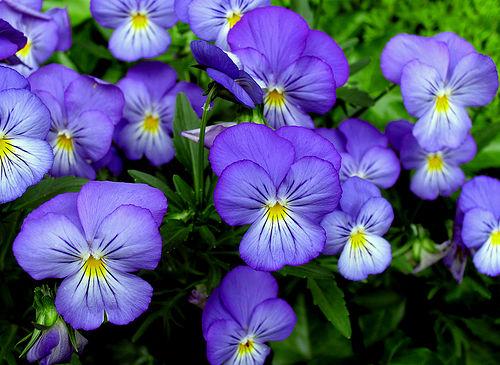
The plant is found at home and in the garden. Having knowledge about the rules of care, you can ensure its normal development and reproduction.
Caring for violets assumes:
- Sufficient watering
- Choosing the right substrate
- Temperature maintenance
- Creating lighting conditions
- Feeding
Indoor Saintpaulia does not like too much moisture. It is watered, taking into account the dryness of the air, but no more than 2 times in 7 days. A flowering plant should be treated with extreme caution. Water should not get on the inflorescences. It is also not worth spraying the foliage at this time.
The ideal option is watering from a tray. The flower pot is placed in nutrient-rich soil saturated with moisture. This is peat, wet sand, expanded clay or river pebbles. It is important not to forget about the hole at the bottom of the violet container.
Saintpaulias are partial to a loose and nutritious environment. For houseplants, it is recommended to imitate natural habitat conditions. Suitable soil: 5 parts leaf soil or black soil, 3 parts peat, 1 part purified river sand. Violets need feeding all year round. At the same time, organic and mineral fertilizers are alternated.
In winter, one organic fertilizer is enough. In spring and autumn, minerals are added 3 times. In the summer, the decision to use fertilizers is made taking into account the growing conditions and the condition of the flower.
Plants are comfortable in bright rooms, but direct sunlight is contraindicated for them.If the place of residence of violets is a window sill, do not let them touch the glass.
Professional gardeners at home artificially create the most suitable conditions for the development of Saintpaulia. They use fluorescent lamps. The devices operate for 15-16 hours. During the hot season, violet feels good at temperatures from 200C to 240C. In winter, +180C is enough for her.
The plant does not feel well in a draft, but it needs an influx of fresh air. The best solution is to take the flower to another room when ventilating. By strictly adhering to the recommendations for caring for violets, you can achieve success in growing them.
How to propagate violets?
The simplest method is vegetative. To take advantage of this technology, mature cuttings are chosen: not too young, but not too old. These conditions are met by shoots of the second row measuring from 2 cm to 4 cm. Water for the shoot is prepared in advance by dissolving an activated carbon tablet in it. This is disease prevention. When the cuttings placed in the liquid have roots, they are planted in the ground.
You can go another way. The cut leaf is immediately planted in the substrate. It is “hidden” under a bag in which holes are made for the flow of fresh air. When new shoots appear, they are planted in other pots. In spring, violets are propagated by separating and planting daughter rosettes. At the same time, the upper overgrown parts of the mother Saintpaulia are cut off.
For the plant, buy not very deep, but wide pots. When the windowsill is small, it is better to breed miniature species. There is an opinion that natural pottery is ideal for flowers. Saintpaulias are comfortable in plastic pots. Different methods of flower propagation allow gardeners to choose the most suitable one in certain conditions.
What diseases threaten the plant?

The result of neglecting the basic rules of care is painful conditions of Saintpaulia and the appearance of pests. By analyzing changes in the state of violets, you can “make a diagnosis” and make adjustments to your actions:
- Brown formations appeared on the leaves of the rosette. For irrigation it is worth taking warmer water.
- Some parts of the plant have turned light yellow. The changes were provoked by direct sunlight.
- All leaves gradually turn yellow. This is a signal about dry air or errors in watering or too much fertilizer.
- The middle of the inflorescence rots. Such a catastrophe is caused by sudden changes in temperature and an abundance of liquid.
- The cuttings are too tall. Temperature too low: the plant is too cold.
All the situations mentioned “prevent” the violet from blooming. When pests appear, they need to be dealt with. Soil disinfection and systemic fungicides will get rid of insects.
Saintpaulias are exhorted:
- Mealybug
- Mite
- Whitefly
- Thrips
- Powdery mildew
- Vascular bacteriosis
A very dangerous case is rotting of the root collar. With this disease, the leaves become limp and lifeless. It is almost impossible to cure the plant. At the same time, the violet can infect other flowers: it should be isolated.
You can still try to save Saintpaulia. It is dug out and all affected areas are separated. Disinfect the pot with laundry soap and plant it again.
If almost the entire plant is affected, then the only way out is to cut off the healthy leaves and re-grow the violet.
Mold on the leaves signals pests. In this case, spraying with water is prohibited. Saintpaulia will come back to life again after treatment with special means. Diseased leaves are removed.Violet is a gentle creature that reacts sensitively to any mistakes in care.
How to form a beautiful rosette?
Simple manipulations will help direct the development of the plant in the right direction. The violet will look aesthetically pleasing if you regularly remove dried inflorescences and affected leaves along with the stem. It is recommended to ensure that the Saintpaulia does not touch the window. In an adult plant, the side rosettes are systematically removed. If this condition is not met, the violet will turn into a large bush and the formation of new buds will stop.
When the best time is missed, a transplant will correct the situation. The flower is divided into separate rosettes and only one is planted in a container.
Old Saintpaulia is rejuvenated. It is cut above the base without leaves. Leave it in water like a cutting. Before this, the coarsened stem is cleaned with a knife until the green core appears. Later the shoot is transplanted into the ground.
To the plant was symmetrical, it is leveled. The flower is affected by light, regulating the height of the leaves. Foliage that is too large is simply broken off so that the harmony of the image is not disturbed.
When Saintpaulia itself does not grow beautifully, then it is given a decent appearance.
Regular care is very important for violets. In response to your care, the grateful plant will delight you with colorful flowers.
Secrets of violet care on video:
Interesting information about the vegetable garden



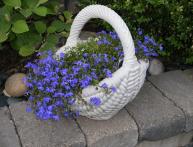

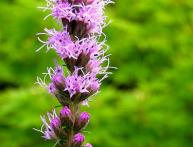
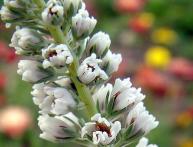




Comments
The article coincided with my latest thoughts on the topic of my violets))) Yesterday my husband and I were in the store, there is a fairly large selection of pots with automatic watering, beautiful... but are they useful? Has anyone encountered them? Are these pots really as good as the manufacturers say they are? I really want to buy such beauty, but I wouldn’t harm the violets..Thanks in advance for your answer))
It took me a long time to figure out what was wrong - the article was about violets, but in all the photographs there were pansies or scientific violas! And the article is useful, thank you.
Every 2-3 years I grow new rosettes from the leaves and throw out the old ones. You also need to talk to flowers every day. They will respond to attention and bloom better.